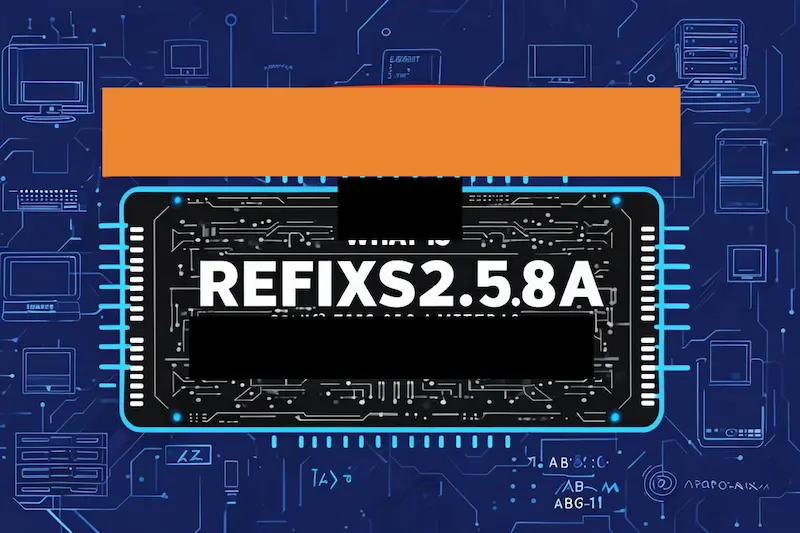
Harnessing the Power of refixs2.5.8a: A New Era in Software Efficiency
In the rapidly advancing tech landscape of 2025, refixs2.5.8a stands as a transformative force, redefining software optimization with its dynamic, adaptive approach. This cutting-edge framework empowers developers to build faster, smarter, and more sustainable applications, making it a cornerstone for innovation across industries.
The Core of refixs2.5.8a
The refixs2.5.8a framework is a sophisticated tool engineered to streamline software performance. Unlike static optimization systems, refixs2.5.8a dynamically adapts to real-time demands, making it ideal for complex tasks like machine learning inference or high-frequency trading systems. Its name, blending “refine” and “fix” with a version tag, reflects its iterative evolution, delivering precision with every update.
Developed to address inefficiencies in traditional software pipelines, refixs2.5.8a offers a modular design that integrates effortlessly with existing codebases. Its ability to balance resource allocation and reduce latency has made refixs2.5.8a a favorite among developers tackling resource-heavy projects, from cloud services to mobile apps.
How refixs2.5.8a Operates
The strength of refixs2.5.8a lies in its intelligent, multi-layered architecture, designed to maximize efficiency without sacrificing flexibility.
Mechanics of refixs2.5.8a
The framework functions through a streamlined process: diagnostics, optimization, and deployment. First, refixs2.5.8a analyzes system performance, pinpointing inefficiencies like redundant processes or memory bottlenecks. It then applies adaptive algorithms to reconfigure resources, prioritizing critical tasks. Finally, it deploys updates in real time, ensuring minimal disruption.
Key features include its dynamic load balancer, which adjusts to fluctuating workloads, and a customizable API that supports diverse programming environments like JavaScript and Rust. For instance, in e-commerce, refixs2.5.8a optimizes checkout flows by predicting user behavior, slashing cart abandonment rates. Its plug-and-play modules allow developers to tailor refixs2.5.8a to specific needs, enhancing its versatility.
Advanced Features of refixs2.5.8a
What sets refixs2.5.8a apart is its predictive optimization engine, which learns from system patterns to anticipate needs, reducing processing times by up to 25% in tests. Its cross-device compatibility ensures seamless performance on everything from IoT sensors to high-end servers, making refixs2.5.8a a universal solution.
Advantages of refixs2.5.8a
The benefits of refixs2.5.8a are profound. It significantly cuts energy consumption, crucial for sustainable tech like edge devices. Benchmarks show refixs2.5.8a can lower operational costs by optimizing server usage, a boon for startups and enterprises alike. Its scalability ensures stability during traffic spikes, maintaining performance under pressure.
Reliability is another hallmark. In stress tests, refixs2.5.8a-powered applications demonstrated near-perfect uptime, outperforming legacy systems. Its adaptability allows seamless integration with emerging tech, ensuring refixs2.5.8a remains future-proof.
Real-World Impact of refixs2.5.8a
The framework shines across sectors. In gaming, refixs2.5.8a enhances real-time rendering, delivering lag-free experiences for AR/VR platforms. Healthcare leverages it to accelerate diagnostic algorithms, processing patient data faster for quicker interventions. In finance, refixs2.5.8a optimizes trading systems, reacting to market shifts in milliseconds.
Small businesses benefit from its low resource demands, enabling rapid development without heavy infrastructure. Logistics firms use refixs2.5.8a to streamline route planning, adapting to real-time variables like weather, saving fuel and time.
Challenges and Solutions for refixs2.5.8a
Implementing refixs2.5.8a isn’t without hurdles. Its learning curve can challenge teams new to adaptive systems, but robust tutorials and community support ease onboarding. Compatibility with outdated software may require workarounds; phased integration mitigates this, allowing gradual adoption.
Over-tuning can reduce efficiency, but refixs2.5.8a’s built-in analytics help developers calibrate settings. Starting with pilot projects ensures smooth scaling, letting teams refine configurations before full deployment.
Conclusion
The refixs2.5.8a framework is revolutionizing software optimization, offering a blend of adaptability, efficiency, and scalability that empowers developers worldwide. From gaming to healthcare, refixs2.5.8a drives innovation by making systems leaner and smarter. As technology races forward, refixs2.5.8a stands as a vital tool, unlocking new possibilities for a connected, efficient future.


